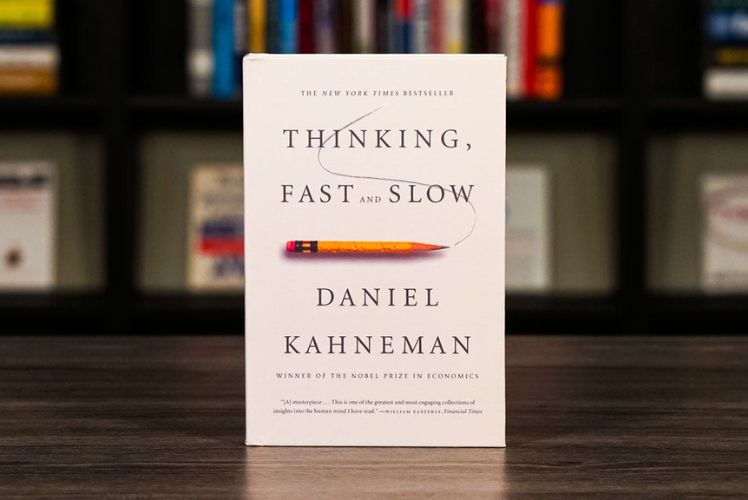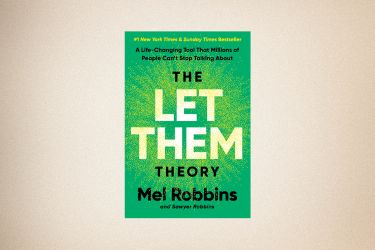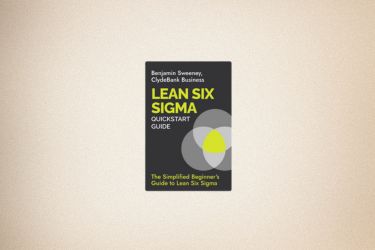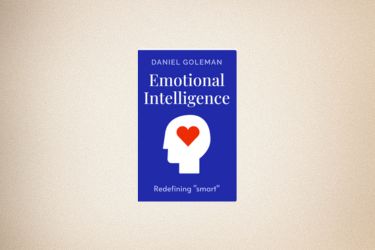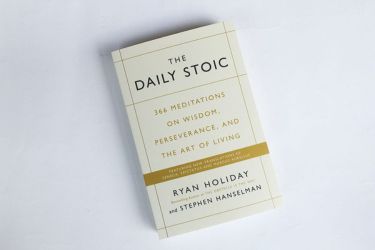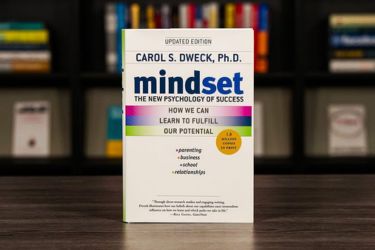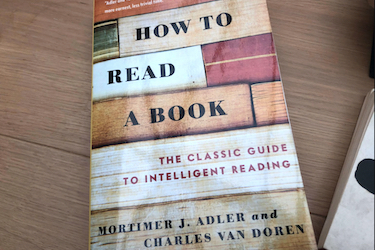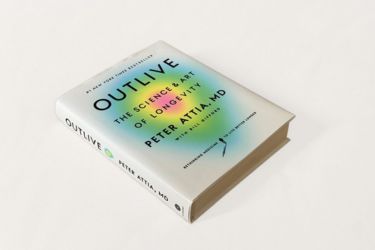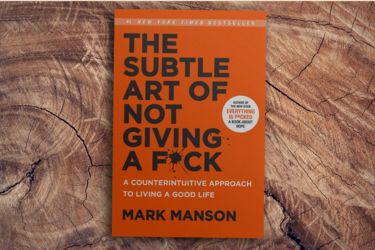Daniel Kahneman's "Thinking, Fast and Slow" stands as one of the most important books about how our minds work. The Nobel Prize winner takes readers through decades of research that shows how we make decisions every day. Published in 2011, this book has changed how people think about thinking itself.
Kahneman reveals that our brains use two different systems to process information: System 1, which is fast and automatic, and System 2, which is slow and requires effort. This simple idea explains why we often make poor choices even when we have all the right information. The book shows us the hidden biases that affect our daily decisions without us knowing it.
The research in this book affects many areas of life, from business choices to medical decisions. Kahneman worked with his partner Amos Tversky to discover these patterns in human thinking. Their work helps us understand why people don't always make rational choices, even when it seems obvious what the right answer should be.
Key Takeaways
- Our minds operate using two systems: one fast and automatic, the other slow and deliberate
- Cognitive biases consistently affect our decision-making in predictable ways
- Understanding these mental patterns can help us make better choices in all areas of life
Overview of Thinking, Fast and Slow
Kahneman's book presents a systematic exploration of human decision-making through two distinct mental systems, drawing from decades of psychological research and his Nobel Prize-winning work with Amos Tversky.
Purpose and Structure of the Book
The book aims to explain how our minds process information and make decisions. Kahneman organises the content around two systems of thinking.
System 1 operates automatically and quickly. It makes snap judgements based on intuition and emotion. This system requires little mental effort.
System 2 works slowly and deliberately. It handles complex reasoning and careful analysis. This system demands significant mental energy.
The book examines how these systems interact. It shows when each system works well and when it fails us.
Kahneman structures the content into five main parts:
- Introduction to the two systems
- Heuristics and biases
- Overconfidence
- Choices and framing effects
- The experiencing self versus remembering self
Each section builds on previous concepts. The progression helps readers understand increasingly complex ideas about human psychology.
Daniel Kahneman's Approach
Kahneman uses research-based evidence throughout the book. He draws from his own experiments and studies by other psychologists.
The author presents findings from his partnership with Amos Tversky. Their collaboration produced breakthrough discoveries about human judgement and decision-making.
Kahneman writes for general readers, not just academics. He uses everyday examples to explain complex psychological concepts. Stories and scenarios make the research accessible.
The book challenges common assumptions about human rationality. Kahneman shows how our thinking contains predictable errors and biases.
He provides practical insights we can apply to daily life. The goal is helping readers recognise their own mental shortcuts and mistakes.
Historical Context in Behavioural Science
Thinking, Fast and Slow represents decades of research in behavioural psychology. The work began in the 1970s when Kahneman and Tversky started studying human judgement.
Their research challenged traditional economic theories. Classical economics assumed people make rational decisions. Kahneman and Tversky proved this assumption wrong.
The book helped establish behavioural economics as a legitimate field. This discipline combines psychology with economic theory.
Kahneman's Nobel Prize in Economic Sciences in 2002 recognised this groundbreaking work. He became the first psychologist to win the economics prize.
The research influenced many fields beyond psychology. Business leaders, doctors, and policymakers now use these insights about human decision-making.
The Dual-System Theory: System 1 and System 2
Kahneman's dual-system theory divides the human mind into two distinct cognitive systems that process information differently. System 1 operates automatically and quickly, whilst System 2 requires deliberate effort and works slowly.
Characteristics of System 1
System 1 represents our fast, automatic thinking. This cognitive system operates without conscious control or effort from us.
We use System 1 when making snap judgements. It processes familiar patterns quickly. This system fills in missing information automatically.
System 1 is highly intuitive and emotional. It jumps to conclusions based on limited information. We rely on it for everyday tasks like reading facial expressions or detecting anger in someone's voice.
This system creates impressions and feelings about situations. It generates simple answers to complex problems. System 1 cannot be turned off voluntarily.
Key features of System 1:
- Operates automatically
- Makes quick decisions
- Uses past experiences
- Creates first impressions
- Works with emotions
- Cannot be controlled directly
System 1 often makes mistakes when dealing with statistics or probability. It prefers simple, coherent stories over complex truths.
Characteristics of System 2
System 2 handles our slow, deliberate thinking. This cognitive system requires mental effort and attention to function properly.
We engage System 2 for complex mental tasks. It performs calculations, compares options, and follows rules. This system checks facts and weighs evidence carefully.
System 2 is logical and methodical. It can override System 1's automatic responses when we make the effort. We use it for activities like solving maths problems or learning new skills.
This system gets tired from overuse. It often accepts System 1's suggestions to save energy. System 2 tends to be lazy and avoids difficult mental work.
System 2 activities include:
- Complex calculations
- Statistical reasoning
- Following detailed instructions
- Comparing multiple options
- Self-control tasks
- Concentrated learning
System 2 can examine its own thinking processes. However, it frequently fails to question System 1's quick judgements.
Interplay Between Cognitive Systems
These two cognitive systems work together constantly in our psychology. System 1 runs automatically in the background whilst System 2 monitors situations selectively.
System 1 typically operates first. It generates impressions and intuitive responses. System 2 usually accepts these suggestions without careful examination.
When System 1 encounters difficulty, it calls upon System 2 for help. This happens with unfamiliar situations or complex problems. System 2 then takes conscious control of our thinking.
The human mind relies heavily on System 1 for efficiency. We cannot process every decision through slow, careful analysis. This creates both benefits and problems for us.
System 2 can learn to recognise when System 1 might be wrong. However, this requires practice and mental discipline. Most people use System 2 sparingly due to its energy demands.
Common interaction patterns:
- System 1 suggests, System 2 accepts
- System 1 struggles, System 2 intervenes
- System 2 programs System 1 through learning
- Both systems compete for mental resources
Understanding this interplay helps us recognise when we need slower, more careful thinking.
Cognitive Biases and Heuristics
Kahneman reveals how mental shortcuts shape our thinking in ways we rarely notice. These automatic processes lead to predictable errors that affect everything from daily choices to major life decisions.
Definition and Origins
Cognitive biases are systematic errors in thinking that occur when our brains process information. They happen because we rely on mental shortcuts called heuristics to make quick decisions.
Kahneman and his research partner Amos Tversky discovered many of these biases through careful experiments. Their work showed that even smart people fall into these mental traps.
Heuristics serve as mental rules of thumb that help us make fast judgements. Whilst they save time and mental energy, they often lead us away from rational thinking.
These biases evolved to help our ancestors survive. Quick decisions about danger or food were more important than perfect accuracy. Today, these same mental patterns can mislead us in modern situations.
The research began in the 1970s when psychologists started questioning whether people actually think rationally. Their findings challenged the idea that humans are naturally logical decision-makers.
Common Biases: Anchoring, Confirmation, and More
The anchoring effect occurs when we rely too heavily on the first piece of information we encounter. This initial number or fact becomes our reference point for all future judgements.
For example, when negotiating a price, the first offer strongly influences the final agreement. Even random numbers can serve as anchors and affect our decisions.
Confirmation bias makes us seek information that supports what we already believe. We ignore or dismiss evidence that contradicts our views.
This bias appears in politics, science, and daily life. We tend to read news sources that match our opinions and avoid those that challenge them.
Other important biases include:
- Availability bias: Judging likelihood by how easily examples come to mind
- Overconfidence bias: Believing we know more than we actually do
- Loss aversion: Feeling losses more strongly than equivalent gains
Role of Heuristics in Everyday Decisions
Heuristics guide most of our daily choices without us realising it. We use them to decide what to eat, which route to take, and how to respond to others.
The representativeness heuristic helps us judge how similar something is to our mental categories. We might assume someone is a librarian because they seem quiet and studious.
Priming affects our judgements through subtle influences in our environment. Words, images, or recent experiences can shift our thinking without our awareness.
These mental shortcuts work well in familiar situations. They help us navigate routine decisions quickly and efficiently.
However, heuristics can fail in complex or unusual circumstances. They may lead to poor intuitive judgement when dealing with statistics, risks, or unfamiliar problems.
Understanding these patterns helps us recognise when to slow down our thinking. We can learn to question our first impressions and seek additional information before making important choices.
Groundbreaking Concepts and Theories
Kahneman's work fundamentally changed how we understand human decision-making through three major discoveries. His prospect theory overturned traditional economic assumptions, whilst his insights into behavioural economics revealed how subtle nudges influence our choices.
Prospect Theory Explained
Prospect theory earned Kahneman his Nobel Prize in Economics and revolutionised our understanding of risk and choice. Working with Amos Tversky, he discovered that people don't make decisions based on absolute outcomes.
Instead, we evaluate gains and losses relative to a reference point. Losses hurt more than equivalent gains feel good - a principle called loss aversion.
The theory shows we're risk-averse when facing gains but risk-seeking when confronting losses. For example, most people prefer a guaranteed £50 over a 50% chance of winning £100.
Yet when facing losses, we'll often gamble to avoid a sure loss. This behaviour contradicts traditional economic models that assume rational decision-making.
Prospect theory explains why people hold losing investments too long but sell winners too quickly. It also reveals why insurance companies and casinos profit from our predictable biases.
Nudge and Behavioural Economics
Kahneman's research laid the foundation for behavioural economics, showing how psychological factors influence economic decisions. His work demonstrates that small changes in how choices are presented can dramatically alter our decisions.
A nudge is a gentle push towards better choices without restricting options. For instance, making organ donation the default option increases participation rates significantly.
Behavioural economics challenges the myth of the rational economic actor. We consistently make predictable errors in judgment, from overconfidence in our predictions to anchoring on irrelevant numbers.
Governments and companies now use these insights to design better policies and products. Default retirement savings plans and simplified choice architectures help people make decisions that serve their long-term interests.
The Illusion of Understanding and Rationality
Kahneman reveals how we systematically overestimate our understanding of the world and our ability to predict future events. This illusion of understanding stems from our need to create coherent narratives from incomplete information.
We mistake confidence for competence, believing that feeling certain about something means we truly understand it. Our brains create the impression of knowledge even when we lack crucial details.
The illusion extends to our belief in rationality. We think we make logical decisions, but research shows we're heavily influenced by emotions, context, and cognitive shortcuts.
This false sense of understanding leads to overconfidence in business predictions, investment choices, and personal decisions. Recognising these limitations is the first step towards better judgment and more realistic expectations about our cognitive abilities.
Implications for Decision Making
Kahneman's research reveals that our minds use two distinct systems that create predictable patterns in how we make choices. Understanding these mental shortcuts helps us recognise when emotions override logic and when deliberate thinking becomes essential.
Practical Applications in Real Life
We can apply Kahneman's insights across many areas of our daily lives. In financial decisions, recognising loss aversion helps us understand why we hold onto losing investments too long.
The anchoring effect appears frequently in negotiations. When someone states a high initial price, it influences our perception of what seems reasonable. We can counter this by researching market values beforehand.
In workplace settings, the confirmation bias affects hiring decisions. We tend to favour candidates who confirm our initial impressions. Creating structured interview processes helps reduce this tendency.
Medical professionals use these concepts to improve diagnosis accuracy. They now recognise how availability bias makes recent cases seem more common than they actually are.
Shopping decisions also follow predictable patterns. Framing effects influence whether we see a discount as savings or a regular price as expensive. Retailers use this knowledge to present prices in ways that encourage purchases.
Limitations of Human Rationality
Our minds consistently fail to meet the standards of perfect logical thinking. System 1 thinking creates fast responses but often produces errors in judgement.
We struggle with statistical reasoning in everyday situations. Most people cannot accurately assess probabilities or understand base rates. This leads to poor risk assessment in insurance, gambling, and investment choices.
Overconfidence bias affects professionals across many fields. Doctors, lawyers, and business leaders often show more certainty than their actual accuracy rates justify.
Our memory creates additional problems for rational decision making. We remember peak moments and endings more clearly than average experiences. This peak-end rule distorts how we evaluate past choices.
Time also affects our rational abilities. When we feel rushed or stressed, System 2 thinking becomes less reliable. We default to mental shortcuts that may not suit the current situation.
Role of Emotions and Mindfulness
Emotions play a larger role in decision making than traditional economic models suggest. Fear and excitement can override careful analysis even when we know better.
Mindfulness practices help us recognise when emotions influence our choices. Taking time to pause before important decisions allows System 2 to engage more effectively.
The affect heuristic shows how current mood colours our judgements. When we feel good, risks seem smaller and benefits appear larger. Recognising this pattern helps us make more consistent choices.
Stress hormones impair our ability to think clearly about long-term consequences. Creating calm environments for important decisions improves outcomes.
We can develop better emotional awareness through simple techniques. Writing down the reasons for major decisions forces us to examine our true motivations beyond immediate feelings.
Legacy and Impact of Daniel Kahneman's Work
Daniel Kahneman's groundbreaking research fundamentally transformed how we understand human decision-making and created the field of behavioural economics. His work with Amos Tversky challenged traditional economic models and continues to influence diverse fields from psychology to public policy.
Influence on Economics and Psychology
Kahneman's partnership with Amos Tversky revolutionised both economics and psychology. Their research showed that people don't make decisions like the rational actors described in traditional economic theory.
Key contributions include:
- Prospect Theory: Demonstrated how people actually weigh losses and gains
- Cognitive biases: Identified systematic errors in human thinking
- Dual-system theory: Explained fast, intuitive versus slow, deliberate thinking
The 2002 Nobel Prize in Economics recognised Kahneman's integration of psychological insights into economic science. This achievement was remarkable because Kahneman trained as a psychologist, not an economist.
His work created behavioural economics as a legitimate field. We now understand that emotions, context, and mental shortcuts heavily influence our choices.
Ongoing Debates and Critiques
Kahneman's theories face ongoing scrutiny from researchers. Some question whether the dual-system model oversimplifies how our minds actually work.
Main criticisms include:
- Replication concerns: Some studies haven't been successfully repeated
- Cultural limitations: Most research focused on Western populations
- Oversimplification: The System 1 and System 2 framework may be too basic
Despite these debates, most researchers accept Kahneman's core insights. The discussions have actually strengthened the field by encouraging more rigorous testing methods.
Some economists still prefer traditional rational choice models. However, behavioural economics continues to gain acceptance in academic and policy circles.
Enduring Relevance in Modern Society
Kahneman's insights shape how we approach problems in business, medicine, and government policy today. Companies use his research to understand consumer behaviour and improve marketing strategies.
Practical applications include:
- Nudge policies: Governments design programmes that encourage better choices
- Medical decision-making: Doctors consider cognitive biases when treating patients
- Financial planning: Advisers help clients overcome emotional investing mistakes
His book "Thinking, Fast and Slow" brought complex psychological concepts to general readers. We see his influence in everything from app design to retirement saving programmes.
The work remains particularly relevant as we face information overload and rapid decision-making in digital environments. Understanding our mental shortcuts helps us make better choices in an increasingly complex world.
Frequently Asked Questions
Readers often have specific questions about Kahneman's groundbreaking work on human decision-making and cognitive biases. These questions cover the book's core concepts, practical applications, and connections to broader psychological research.
What are the core principles discussed in 'Thinking, Fast and Slow'?
The book centres on two thinking systems that control our minds. System 1 operates quickly and automatically. It makes snap judgements without much effort.
System 2 works slowly and deliberately. It requires mental effort and careful analysis. Most people rely too heavily on System 1.
Cognitive biases shape our daily decisions. These mental shortcuts often lead us astray. We make predictable errors in judgement.
The availability heuristic affects what we consider likely. Recent or memorable events seem more probable. This distorts our risk assessment.
How can one summarise the content of 'Thinking, Fast and Slow'?
Kahneman explores decades of research on human psychology. The book examines why we make poor decisions. It shows how our minds trick us.
The first section introduces the two-system model. System 1 creates impressions and feelings. System 2 turns these into beliefs and actions.
Later chapters focus on specific biases. Overconfidence leads to bad predictions. Loss aversion makes us fear losing more than we value gaining.
The final sections cover happiness and well-being. We remember experiences differently than we live them. Peak moments and endings matter most.
Can you provide an example of cognitive bias as explained in 'Thinking, Fast and Slow'?
The anchoring bias demonstrates System 1's influence. When we hear a number first, it affects our later judgements. This happens even when the number is completely random.
Kahneman describes an experiment with spinning wheels. Participants spun a wheel showing numbers 1-100. They then estimated the percentage of African nations in the UN.
Those who spun higher numbers gave higher estimates. The random spin anchored their thinking. Their System 1 used this irrelevant information.
This bias affects negotiations and purchases. The first price mentioned sets expectations. Our brains cannot ignore this initial anchor.
What are some notable quotations from 'Thinking, Fast and Slow'?
Kahneman writes that luck plays a large role in every success story. This challenges common beliefs about achievement. We often ignore randomness in outcomes.
The book opens with discussion of office watercooler conversations. Kahneman sees gossip as a natural place to apply psychological insights. These casual talks reveal our thinking patterns.
He emphasises that System 2 thinks it makes the decisions. In reality, System 1 generates most impressions. We have less control than we believe.
The distinction between experiencing and remembering selves appears throughout. How we live moments differs from how we recall them. Memory shapes our life satisfaction.
How does 'Thinking, Fast and Slow' relate to other works by Daniel Kahneman?
This book summarises Kahneman's entire career in psychology. It builds on his Nobel Prize-winning work with Amos Tversky. They developed prospect theory together.
Their earlier research challenged rational economic models. People do not make logical financial decisions. Emotions and biases drive behaviour instead.
The book connects to Kahneman's studies on happiness. He researches how people evaluate their lives. Well-being depends more on memory than daily experience.
His work influences business, medicine, and politics. These fields now recognise human irrationality. Decision-making models account for psychological factors.
Where can one find a comprehensive chapter-by-chapter analysis of 'Thinking, Fast and Slow'?
Many book clubs discuss Kahneman's work in detail. Online discussion guides break down each section. These resources explore specific concepts and applications.
Academic reviews examine the book's scientific foundations. Psychology journals publish detailed analyses. These sources verify Kahneman's research claims.
Educational websites offer study guides for students. They summarise key points from each chapter. Some include practice exercises for identifying biases.
Professional development programmes use the book extensively. Business schools teach its principles in decision science courses. Management training incorporates these psychological insights.

